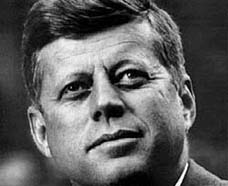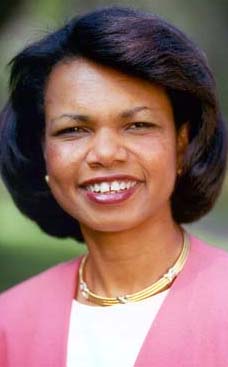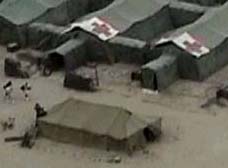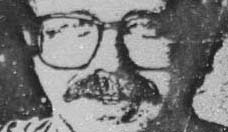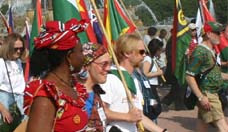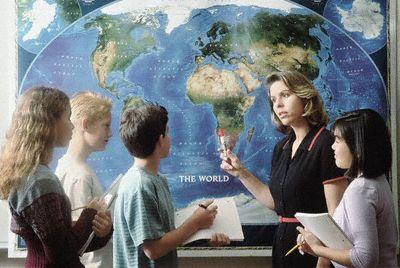
Simply put, a cultural plunge is individual exposure to persons or groups markedly different in culture (ethnicity, language, socioeconomic status, sexual orientation, and/or physical exceptionality) from that of the "plunger." Most plunges last about one hour and there are a total of four required in my course. Important criteria for cultural plunges as described in my course syllabus are: (1) the majority of people there are from the focal group; (2) you are on the turf of the focal group (not in a school or restaurant); (3) this must be a type of experience you've never done before; (4) the plunge takes place after this course begins (credit cannot be given for past experiences); (5) you do not take notes; and (6) the plunge lasts at least one hour.
The Cultural Plunge: Cultural Immersion as a Means of Promoting Self- Awareness and Cultural Sensitivity among Student Teachers
The Cultural Plunge: Cultural Immersion as a Means of Promoting Self- Awareness and Cultural Sensitivity among Student Teachers
Jan 1, 2006
Teacher Education Quarterly
[Excerpt]
For some years several professors at San Diego State University have been using a cultural immersion activity called a cultural plunge. They have used this activity in a sociology program (Gillette, 1990), in counselor education (Cook, 1990; Malcolm, 1990) and most recently, as described here, in teacher education. The author has been using the cultural plunge in teacher education since 1989, at which time he incorporated it in classes in that department, and several other teacher education faculty now use it as well. While faculty who utilize the cultural plunge tend to do so in a similar manner, there are some differences among the approaches.
This article describes the way in which he approaches this activity.
Simply put, a cultural plunge is individual exposure to persons or groups markedly different in culture (ethnicity, language, socioeconomic status, sexual orientation, and/or physical exceptionality) from that of the "plunger." Most plunges last about one hour and there are a total of four required in my course. Important criteria for cultural plunges as described in my course syllabus are: (1) the majority of people there are from the focal group; (2) you are on the turf of the focal group (not in a school or restaurant); (3) this must be a type of experience you've never done before; (4) the plunge takes place after this course begins (credit cannot be given for past experiences); (5) you do not take notes; and (6) the plunge lasts at least one hour.
While the number and type of plunges I require have varied over the years, the most recently required are: (1) Attend a service at the largest African American church in the city; (2) Attend a religious ceremony in a language which you do not understand (Spanish and Vietnamese are recommended, as they constitute the two most widely spoken languages among English Learners ); (3 ) Interact with homeless people; and (4) Interact with people with disabilities.
Cultural plunges have four major objectives which are stated in the course syllabus: (a) to have direct contact with people who are culturally different from oneself in a real-life setting which represents the target group's "turf; (b) to gain insights into circumstances and characteristics of the focal community; (c) to experience what it is to be very different from most of the people one is around, and (d) to gain insight into one's values, biases, and affective responses.
Cultural Plunge Papers
Because people who engage in cultural immersion activities heighten their learning when they reflect upon their experience (Barrett, 1993), students write a 3-page reaction paper for each plunge. On page one, students list 10 popular stereotypes about the focal group and indicate what prior contact they've had with it. On page two, students describe their emotional response to the experience and any insights on why they reacted emotionally the way they did. Page three begins with discussion of whether the plunge experience reinforced or challenged the popular stereotypes of the focal group. The cultural plunge paper is concluded with exploration of "implications for my career." This last section is particularly significant because students often overlook the implications of the plunge experience for the classroom or other career setting.
Upon further reflection, they often realize such things as the importance of greeting students warmly, learning to speak a few words of diverse languages as a sign of respect and interest in various cultures, and, most importantly, the crucial nature of not prejudging others.
Excerpts From Student Reaction Papers
Going beyond quantitative data, perhaps the following excerpts from students' plunge papers can best illustrate the impact that such experiences have on participants. The excerpts are organized around stated plunge objectives:
To Learn about the Target Community
[Farrakhan discussed]...some of the 'lies' that the whites use to keep African Americans down, and aren 't they clever at making the blame all fall upon these people. The media portrays mainly blacks as gang members and drug dealers and this perpetuates the 'lie' and grinds away at all African Americans 'sense of respect and self- esteem.
Many of my friends view Hispanics as lazy people. Nothing could be further from the truth. I saw many people, men and women, young and old, working their hearts out. Their community...was ... a place of pride. As for family, when Paco told us about his family, I could see the pride and respect in his eyes.
Students are often quite surprised, even shocked, to learn that communities they visit are very different than what they had anticipated. They become intensely aware of how little they know about people unlike themselves, and often feel very ashamed about their ignorance. They often report a new desire to learn more about different cultural groups. Given the fact that gay students are among the most vulnerable students in middle school and high school (Weller, 2004), experiences which help future teachers to develop an awareness about the gay community are of particular significance.
To Experience Being an Outsider Arriving at the church, ... I immediately felt out of place and almost apologetic for being there. It was a strange feeling to he the minority in the group, something I have never experienced before to such a degree.
I realize much clearer now how it really must feel to be a minority. I 'vejust taken my color for granted. It's not something I have to deal with everyday.
I can now understand more thoroughly what it is like to be in the minority, rather than the majority. The sense of isolation and loneliness is horrible, and it makes me sick to think some people live with that feeling everyday.
The underlying theme in these quotes is clearly fear. Most students who embark on cultural plunges are very anxious and occasionally even express concern for their lives. When I telephoned a student who dropped my summer, 1993 class after the first day, she told me that a big reason was because she was afraid to do the required plunge in an African American community, and both she and her husband were afraid that she might be physically harmed. Another student verbally expressed similar fears on the first day of that same class, but she decided to stay in the class and in fact had a great time on that plunge, as do almost all students.
The sad fact is that many European American students in my classes have usually managed to avoid ever going into a setting where the predominant ethnicity is different from their own, and many students of color have socialized primarily with members of their own ethnic group. Due to the influence of parents, peers, and mass media images, many White students have a profound fear of people of color and particularly of African-Americans, as these quotes reflect. Students of color are not exempt from such fears either, and they often are very anxious about visiting a community of a different ethnic group.
The reality is that we all learn the same lies, and students tend to have the same biases about people different from themselves.
As these quotes indicate, cultural plunges are often the first experiences that many European American students have had of not being in the majority. Intense discomfort and a desire to leave immediately are common responses. The value of this particular lesson is profound. Students often write in their plunge reaction papers that they are now keenly aware of the importance of reaching out to their students who are ethnic outsiders. This realization is usually deepened when someone from the community reaches out to them on their plunges, which is usually the case. They thus learn firsthand what a positive impact a friendly gesture can make to a student who is culturally different from most others in a new setting, and they determine to be especially welcoming to ethnically diverse children in their future classes.
Conclusion
Plunges represent a type of education that is experiential, meaningful, interesting, challenging, confidence- building, growth- inducing and rewarding for most students. They represent a significant means towards students' greater understanding and acceptance of others, as well as of enhancing self-awareness; they thus have great potential as a viable educational approach in a full range of academic, business and government training programs. The fact that most plunges are one or two hours long makes their use very practical, and numerous students have said that they have gotten more out of plunges than out of service work requiring much more of a time commitment.
Given the myriad challenges that confront teacher education in terms of preparing future teachers for the increasingly diverse students they will serve, the cultural plunge provides one means of helping to sensitize student teachers to social and cultural realities, to their own values and biases, and to the students of today's and tomorrow's classrooms.
References
Baker, F. (1989). How can you have experiential learning without experiential teaching? Teacher Education Quarterly, 16(3), 35-43.
Barrett, M. (1993). Preparation for cultural diversity: Experiential strategies for educators. Equity & Excellence, 26(1), 19-26.
Bergen, Jr., T.J. ( 1989). Needed: A radical design for teacher education. Teacher Education Quarterly, 16(1), 73-79.
Berlin, B.A. (2004). Reaching unmotivated students. The Education Digest, 69(5), 46-47.
Brown, S., Santiago, D., & Lopez, E. (2003). Latinos in higher education. Change, 35(2), 40-46.
Cochran-Smith, M. (2003). The multiple meanings of multicultural teacher education: A conceptual framework. Teacher Education Quarterly, 30(2), 7-26.
Cook, V. (1990). Personal interview. San Diego, June.
Davis, A. ( 1989). Teaching the disenfranchised child: The limitations of positivist research on instruction. Teacher Education Quarterly, 16(1), 5-14.
Fitch, E. F. (2002). Disability and inclusion: From labeling deviance to social valuing. Educational Theory, 52(4), 463-477.
Gillette, T. (1990). Telephone Interview. San Diego, May.
Glazier, J. (2003). Moving closer to speaking the unspeakable: White teachers talking about race. Teacher Education Quarterly, 30(1), 73-93.
Klotz, M.B. (2004). Help kids welcome disabled students. The Education Digest, 69(6), 41 -42.
Lin, Q. (2001). Towards a caring-centered multicultural education within the social justice context. Education, 122(1), 107-114.
Major, E. & Brock, C. (2003). Fostering positive dispositions toward diversity: Dialogical explorations of a moral dilemma. Teacher Education Quarterly, 30(4), 1-21.
Malcolm, D. (1990). Personal interview. San Diego, April.
Milner, R. (2003). This issue. Theory into Practice, 42(3), 170- 172.
Mio, J.S. (1989). Experiential involvement as an adjunct to teaching cultural sensitivity. Journal of Multicultural Counseling and Development, 17(1), 39-45.
Ornstein, A.C. & Levine, D.U. (1989). Social class, race, and school achievement: Problems and prospects. Journal of Teacher Education, 40(5), 17-23.
Prince, C. (2002). Attracting well-qualified teachers to struggling schools. American Educator, 25(4), 16-21.
Shinew, D. & Sodorff, C. (2003). Partnerships at a distance: Redesigning a teacher education program to prepare educators for diverse, high-need classrooms. Action in Teacher Education, 25(3), 24-29.
Smith-Davis, J. (2004). The new immigrant students need more than ESL. The Education Digest, 69(8), 21-26.
Steeley, S. (2003). Language minority teacherpreparation: A review of alternative programs. Action in Teacher Education, 25(3), 59-68.
Weller, E. M. (2004). Legally and morally, what our gay students must be given. The Education Digest, 69(5), 38-43.
Wilson, A. (1982). Cross-cultural experiential learning for teachers. Theory Into Practice, 21(3), 184-192.
Jess Nieto is an associate professor in the School of Teacher Education at San Diego State University, San Diego, California.
Copyright Caddo Gap Press Winter 2006
